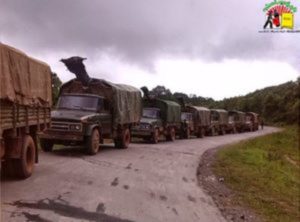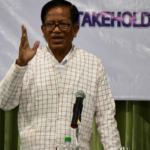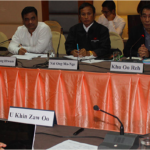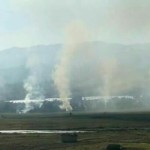Shan Herald Agency for News (SHAN) | September 5, 2016
The Burmese military continues to reinforce its troop strength in SSPP/SSA territory, despite calls to seek an end to the conflict by the ethnic armed group at last week’s Union Peace Conference in Naypyidaw.
According to an official from the Shan militia’s News and Information Department, government forces have been increased in and around Tangyan and Mongyai townships in northern Shan State, and Kehsi and Monghsu townships in southern Shan State – areas under SSPP/SSA control.
He said that now both sides are now confronting each other, although no clashes have yet been reported.
According to SSPP/SSA veteran Gen. Hso Ten, such hostilities have to halt before both sides can talk about peace. If fighting still goes on, he said, it is impossible to continue with the peace process.
“The announcement of a nationwide ceasefire should be made before any peace conference,” he said. “If they declare
SSPP/SSA, a member of the United Nationalities Federal Council which has to date declined to sign the nationwide ceasefire agreement, or NCA, has previously approved state-level and union-level ceasefire accords with the former Burmese government administration headed by President Thein Sein. However, it did not sign the NCA alongside eight other ethnic armies on October 15 last year.
The NCA remains the blueprint for peace talks – dubbed the 21st Century Panglong Conference by current de facto leader Aung San Suu Kyi – the first round of which wrapped up this weekend in the Burmese capital.
On August 28, only three days before the Union Peace Conference began, a Burmese government unit under North Eastern Command launched an offensive against SSPP/SSA positions in Mong Gao tract of Tangyan Township, Lashio District.
Min Zaw Oo, the director of the Union Joint Monitoring Committee (JMC), said that the JMC has a mandate to help mediate during times of hostilities between sides that are signatories to the NCA. However, he said, conflicts with non-signatory armed groups are “difficult to resolve”.
Min Zaw Oo added: “When this type of situation arises, at a lower level, they will not be able to resolve the problem.”
At the opening ceremony of the five-day peace conference, which kicked off on August 31, Burma’s Commander-in-Chief Snr-Gen Min Aung Hlaing said that every armed group has to follow the military’s stated “Six-point Principles” in the peace process.
The Burmese military’s Six-point Principles are: to maintain a keen desire to reach eternal peace; to keep promises agreed to in peace deals; to avoid capitalizing on the peace agreement; to avoid placing a heavy burden on local people; to strictly abide by existing laws; and to ‘march towards a democratic country’ in accordance with the 2008 Constitution.
This article originally appeared on Shan Herald Agency for News (SHAN) on September 5, 2016.






